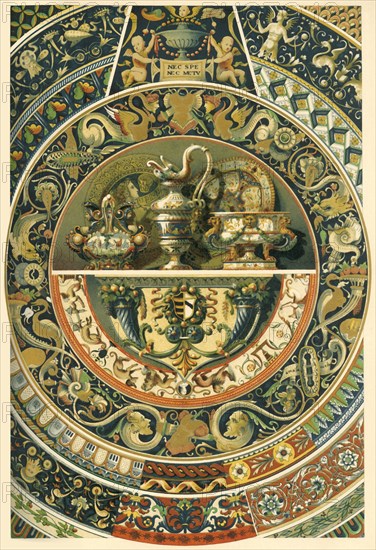
Sujet
Italian Renaissance painted ceramics, (1898). Creator: Unknown.
Légende
Italian Renaissance painted ceramics, (1898). 'Fig 1: Lower termination of a Madonna-relief by the Robbia-school. Fig 2: Surface-pattern on the vestry-fountain in the church St. Maria novella at Florence. Figs 3-5: Border-decorations on dishes from the manufactory at Faenza. Fig 6: Belly-decoration on a handled vase from the same. Figs 7-9: Profile-decorations on a vase from the same. Fig 10: Profile-decoration on an inkstand from the same. Figs 11-13: Border-decorations on dishes from the same. Figs 14-19: Border-decorations on dishes from the manufactory at Chaffagiolo. Fig 20: Border-decorations on dishes from the manufactory at Gubbio. Figs 21-23: Border-decorations on dishes from the manufactory at Urbino. Figs 24-27: Divers vessels from the manufactory at Urbino. Fig 28: Dish from the manufactory at Pesaro. Fig 29: Border-decoration on a dish from the manufactory at Pesaro...The earthenware called 'majolica' in all probability derives its name from the island of Majorca, where glazed pottery was extensively manufactured, especially by the Moors, and whence this art found its way into Italy. In our days the term 'majolica' is generally applied to all finer fayence-ware, when executed with more care than coarser pottery i. e. to such earthenware, the main substance of which is potter's clay covered with nontransparent glaze, and coloured'. Plate 55 from "The Historic Styles of Ornament" translated from the German of H. Dolmetsch. [B.T. Batford, London, 1898]
Crédit
Photo12/Heritage Images/The Print Collector
Notre référence
HRM19G33_278
Model release
NA
Property release
NA
Licence
Droits gérés
Format disponible
63,0Mo (4,2Mo) / 32,9cm x 48,0cm / 3885 x 5669 (300dpi)